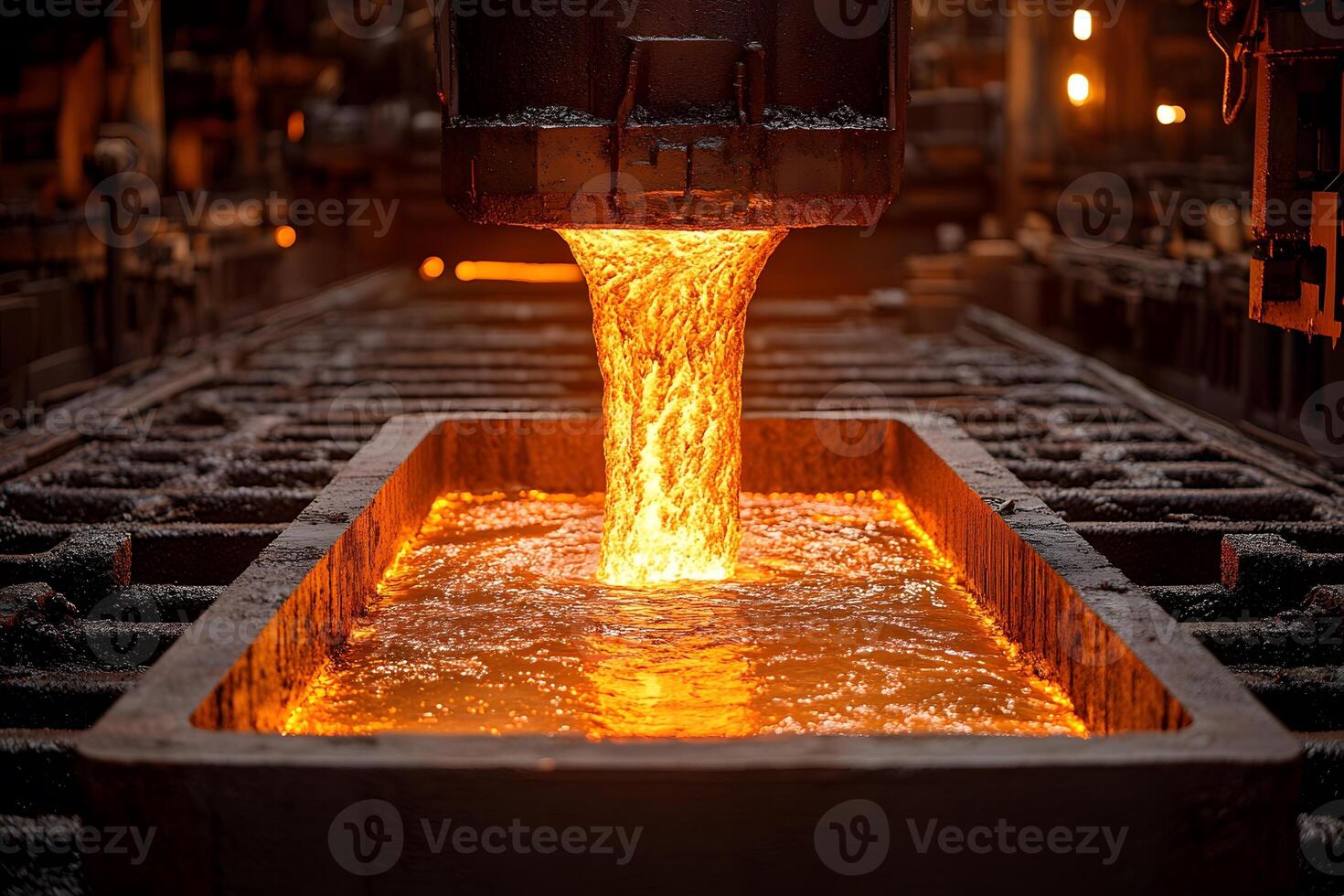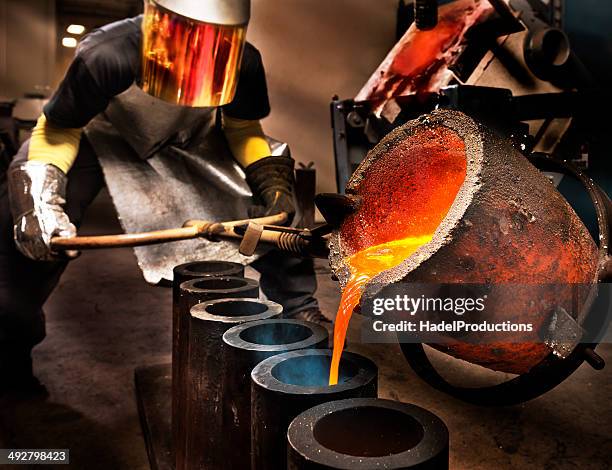Beginner-Friendly Guide to Aluminum Foundry Processes
Wiki Article
Exploring the Art of Metal Casting: Strategies and Applications in Modern Foundries
Metal casting is a time-honored craft that integrates virtuosity with engineering accuracy. From old strategies to modern-day advancements, this process has actually evolved significantly. Different approaches, such as sand casting and lost-wax casting, showcase the flexibility of the tool. Innovations like 3D printing are reshaping how factories operate. As the lines in between capability and creativity blur, one have to consider just how these advancements influence both modern applications and traditional methods. What lies ahead in this developing landscape?The Principles of Metal Casting
Metal casting, a pivotal procedure in production, entails putting liquified steel right into a mold and mildew to achieve a preferred shape. This method serves as a structure in the production of complex metal components throughout various industries. Key components of steel casting include the selection of materials, which can vary from aluminum to steel, each selected for its details homes and application suitability. The procedure begins with mold production, which can be made from sand, steel, or porcelains, depending upon the casting approach utilized. The liquified steel is then meticulously poured into the mold, where it solidifies and cools down. Critical aspects such as temperature level control, cooling rate, and mold design considerably impact the final product's quality and features. Furthermore, recognizing the physical and chemical residential or commercial properties of the metal help in optimizing casting performance, ultimately improving the effectiveness of the production procedure and making certain top quality output customized to specific needs.Traditional Casting Methods
Traditional casting methods encompass a selection of techniques that have actually stood the examination of time, showing their efficiency in producing elaborate steel parts. One noticeable method is sand casting, which employs a combination of sand and a bonding representative to produce molds. The adaptability of sand casting permits for the manufacturing of varied shapes, making it ideal for both large-scale and small-scale manufacturing. One more notable technique is investment casting, usually made use of for specific and complex geometries. This technique includes producing a wax pattern that is covered in a ceramic covering, which is after that warmed to remove the wax, leaving a cavity for molten steel. In addition, die casting is utilized for high-volume production, where molten metal is infused right into recyclable metal mold and mildews. Each of these traditional strategies remains appropriate, showcasing the craftsmanship and ability fundamental in the art of metal casting, while fulfilling the needs of numerous markets.Modern Innovations in Metal Casting
As industries evolve, developments in steel casting are reshaping manufacturing processes and improving effectiveness. Advanced modern technologies such as 3D printing and computer-aided layout (CAD) are changing mold and mildew production, allowing for elaborate layouts that were previously unattainable. These approaches help with quick prototyping, cultivating and reducing lead times imagination in item growth.Furthermore, the assimilation of automation and robotics in shops is enhancing operations, reducing human error, and increasing security. Smart sensing units and real-time surveillance systems enable precise control of temperature and product residential or commercial properties, guaranteeing better results.
Additionally, lasting methods are arising, with the usage of energy-efficient heaters and recycled products, minimizing environmental effect. The adoption of composite products and innovative alloys is also expanding the opportunities of steel casting, leading to more powerful and lighter components. On the whole, these modern advancements are transforming steel casting right into an extra efficient, exact, and ecologically liable market.
Applications Across Numerous Industries

While diverse industries progressively rely upon steel casting, the method's adaptability plays an important duty in meeting certain application needs. In the auto sector, metal casting is vital for producing engine components, transmission real estates, and various other elaborate parts that call for accuracy and durability. The aerospace industry take advantage of lightweight casted elements, making certain both performance and fuel efficiency. Furthermore, the building sector utilizes steel casting for architectural components, such as beams and supports, boosting the honesty of structures and bridges.
Moreover, the power field employs metal casting for wind turbine blades and other significant equipment that should hold up against extreme problems. Medical gadgets likewise see applications of metal casting, specifically in medical instruments and prosthetics, where precision is essential - Aluminum Foundry. Overall, the versatility and reliability of steel casting make it important across different areas, adding to the innovation of modern technology and infrastructure in modern-day culture
The Artistic Side of Metal Casting
Although usually connected with industrial applications, steel casting also finds its area in the domain of art, where knowledgeable artisans transform molten steel right into intricate designs and meaningful sculptures. This creative side of steel casting encompasses diverse techniques, consisting of sand casting, lost-wax casting, and financial investment casting, each offering unique possibilities for imagination. Musicians utilize these methods to produce works that range from abstract types to realistic depictions, enabling individual expression and commentary on contemporary concerns.
Regularly Asked Concerns
What Security Steps Are Necessary in a Steel Casting Shop?
Essential safety procedures in a steel casting shop consist of individual protective equipment, correct air flow, emergency protocols, training in managing molten steels, normal devices maintenance, and clear interaction of risks to guarantee employee security and health and wellness. Aluminum Casting.How Do Ecological Laws Impact Metal Casting Processes?
Environmental regulations significantly influence steel casting procedures by mandating making use of cleaner innovations, reducing discharges, and advertising waste management methods. Compliance frequently calls for financial investments in equipment, training, and read more alterations to existing procedures to lessen ecological influence.What Are the Common Problems in Metal Spreadings?
Common flaws in steel castings include porosity, shrinkage, incorporations, and misruns. These issues can develop from improper mold style, inadequate temperature level control, or contamination, eventually impacting the structural honesty and overall top quality of the end product.Exactly How Is Waste Managed During Metal Casting Manufacturing?
Waste monitoring in metal casting production entails reusing scrap metal, executing reliable material usage, and using sophisticated innovations to minimize waste. Shops embrace methods like sand recovery and appropriate disposal approaches to decrease ecological impact.What Occupation Opportunities Exist in the Metal Casting Sector?
The steel casting industry offers diverse occupation opportunities, including roles such as shop supervisor, metallurgical engineer, top quality control inspector, pattern maker, and manufacturing supervisor, dealing with different skill collections and proficiency in producing processes.Metal casting, a crucial procedure in manufacturing, includes putting molten steel into a mold and mildew to accomplish a wanted shape. Furthermore, die casting is made use of for high-volume manufacturing, where molten steel is injected into reusable steel molds. While diverse sectors significantly count on metal casting, the technique's flexibility plays an important role in conference certain application requirements. Frequently linked with commercial applications, metal casting likewise discovers its location in the domain of art, where knowledgeable craftsmens transform molten metal into intricate styles and expressive sculptures. Waste monitoring in metal casting production includes recycling scrap metal, implementing reliable material usage, and making use of innovative technologies to decrease waste.
Report this wiki page